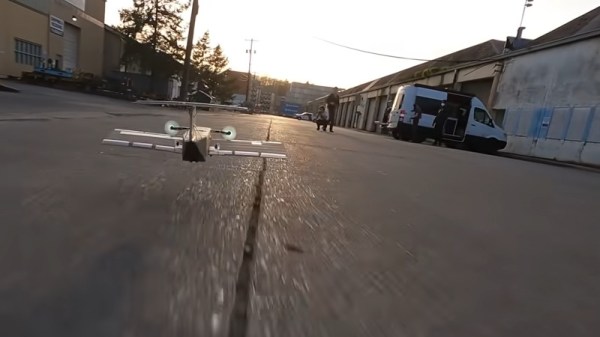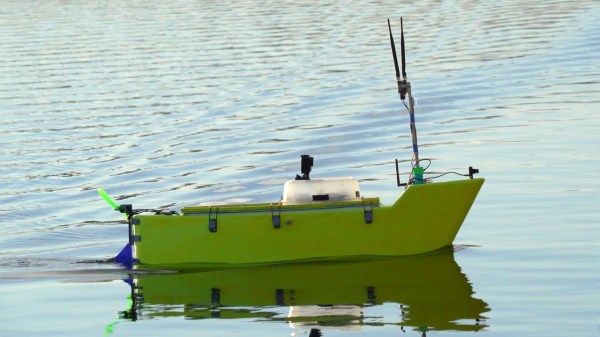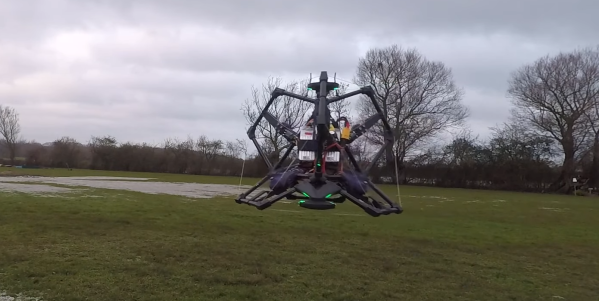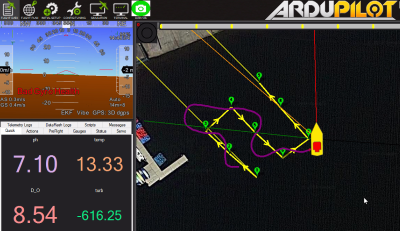[rctestflight] has built several autonomous boats, and with missions becoming longer and more challenging, he bought an inflatable kayak to serve as a dedicated rescue vessel. Instead of relying on outdated manual paddling, he built an autonomous solar-powered tugboat.

The tugboat uses a pair of molded fiberglass hulls in a catamaran configuration. The wide platform allows a pair of 100W solar panels to be mounted on top. It was [rctestflight]’s first time molding anything out of fiberglass, so there was quite a bit of trial and error going on. The mold was 3D printed in sections, aligned with dowel pins, and glued together. After the epoxy had cured, the mold halves could be split apart for easier removal of the hull.
As with most of [rctestflights] autonomous vehicles, control is handled by a Pixhawk 4 running ArduPilot/ArduRover. A pair of 76 mm brass propellers powered by brushless motors provide propulsion and differential steering. The motors get power from six LiFePO4 batteries, which charge from the solar panels via MPPT charge controllers. The hulls are covered with plywood decks with removable hatches and inspection windows. After a bit of tuning, he took the boat for a few test runs, the longest being 5.1 km with himself in tow in the kayak. At less than 5 km/h (3 mph) it’s no speedboat, but certainly looks like a relaxing ride. Many of [rctestflight]’s previous vessels were airboats to avoid getting underwater propellers tangled in weeds. It was less of an issue this time since he could just haul the tugboat close to the kayak and clear the propellers.
[rctestflights] are always entertaining and educational to watch, and this one certainly sets the standard for sea-shanty soundtracks at 13:32 in part two.
Continue reading “Solar Powered Autonomous Tugboat For Rescuing Autonomous Vessels”


























